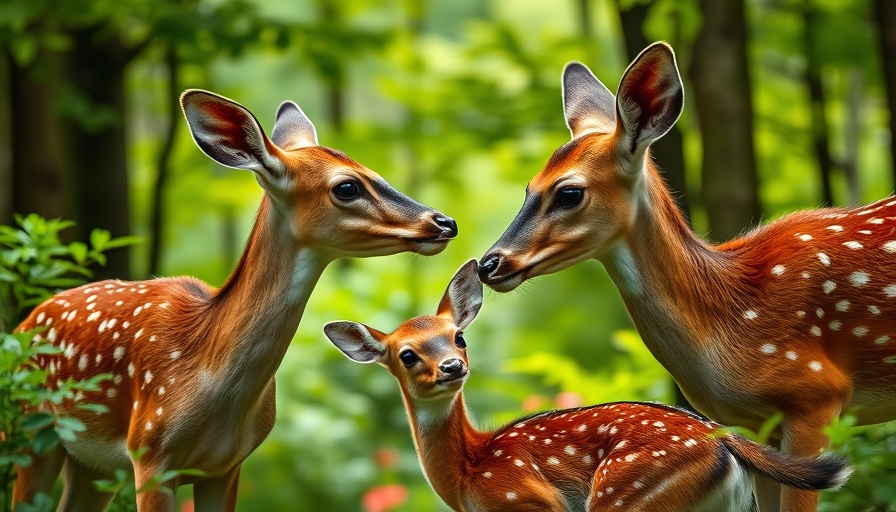
Understanding Chronic Wasting Disease (CWD)
Chronic Wasting Disease (CWD) is a contagious neurological illness affecting deer and other cervids, characterized by drastic weight loss, behavioral changes, and ultimately, death. This debilitating disease has been spreading across various regions, raising alarms about its impacts on both wildlife populations and ecosystems.
The Disturbing Discovery
Recent studies have revealed unsettling information about how CWD can be transmitted even before fawns are born, suggesting that the disease might be affecting future generations of deer. Researchers have identified that the presence of infectious prions—misfolded proteins responsible for CWD—can permeate the fetal environment, putting pregnant does and their unborn fawns at risk. This adds a troubling new dimension to our understanding of the disease's transmission.
Why This Matters to Outdoor Enthusiasts
For those who enjoy exploration and outdoor escapes in nature, the implications of CWD are significant. Not only does it threaten deer populations, but it also raises concerns for hunters and wildlife watchers. As CWD spreads, the thrill of observing healthy wildlife might diminish. Outdoor enthusiasts must grapple with potential limitations on hunting seasons, adjusted regulations, and the broader ecological consequences of dwindling deer populations. Awareness of such issues is crucial for informed decision-making during outdoor pursuits.
Future Trends in CWD Research and Management
As scientists continue to explore the complexities of CWD, the focus is not only on management strategies but also on the potential need for vaccination programs or innovative approaches to prevent transmission. The research underscores the importance of monitoring deer herds and implementing sustainable practices to ensure the health of both wildlife and ecosystems. If you enjoy discovering wildlife, understanding how to tackle CWD will enhance your outdoor experiences responsibly.
Take Action: Advocate for Wildlife Health
As the situation surrounding CWD evolves, it’s paramount for the target community to stay informed and engaged. Participate in local wildlife management programs, advocate for policies that protect deer populations, and educate fellow outdoor enthusiasts about the risks and prevention measures related to CWD. By taking part in these efforts, you can help safeguard our natural environments and ensure that future generations can continue to enjoy the thrill of outdoor adventures.
 Add Row
Add Row  Add
Add 




Write A Comment